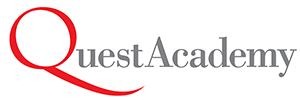STEAM and Maker Space are educational learning experiences that focus on applying the academic components of Science, Technology, Engineering, Art and Math with the intent to prepare students for the 21st century using problem-solving, critical thinking, creativity, collaboration, and communication.
Maker Space
Preschool—4th grade
Maker Space is a variety of low tech tools. Students will take thoughtful risks in the design and engineering process to innovate ideas and bring those ideas to life using modern tools and technology, as well as found objects, recyclables, robotics, and circuits. Students will have opportunities to persist in problem-solving, embrace collaboration and work through the creative process by applying the design principles to their path of interest.
As students in our youngest grades gain exposure to the technology in their world, our Maker Space program aligns with the expanding innovation landscape to equip them not only with beginner technical skills, but also the mindset necessary to embrace project-based learning opportunities. Incorporating 21st century skills, students attempt challenges that will test their fortitude, resourcefulness, and risk-taking in a supportive environment.
STEAM (Innovation Lab)
5th—8th grade
STEAM is about THINKING, CREATING and ITERATING using circuits, Arduinos, Raspberry Pis, Micro:bits, Lily Pads, Drones, 3D Engineering and printing, Makey Makey, Coding with Scratch, Python, CSS, Laser Cutting, Lego Mindstorms & Robotics, LittleBits, and much more! STEAM is also about tenacity and perseverance and completing a project even when it becomes very difficult. Throughout the year, students create and update their personalized blogs as a Digital Portfolios to document their learning.
Project Lead the Way – a nationally renowned and established program for high school and elementary students, has been adopted at Quest for the middle school students. Computer Science for Innovators and Makers and Engineering & Modeling is a large part of the STEAM curriculum under the Project Lead the Way curriculum. This program prepares students for high school in the areas of programming in Javascript, Python and physical computing, circuitry and engineering.
According to the World Economic Forum report, “in 2020, more than one-third (36%) of all jobs across all industries are expected to require complex problem-solving as one of their core skills.” Students of the 21st-century need to think independently and solve increasingly complex problems. Skills that are needed for this are problem-solving, critical thinking, collaboration and creativity. This is the main foundation for the curriculum in Quest Academy’s STEAM class. Integrating these skills among different content areas, includes not only exposing students to a combination of Science, Technology, Engineering, Art and Math but also language arts. The emphasis on literacy is important as doing so prepares students to write reports, transfer technical processes into writing, and to communicate their outcomes effectively.
In the future, students will have to embrace new technologies that do not yet exist. Research shows that teaching students comprehensive innovation and cultivating their ability to solve problems will then prepare them to apply their skills to new technologies.
In STEAM class (5-8), the focus is on all of these important facets of learning. What is being taught more importantly than 3D Design & Engineering, Laser Cutting, Programming and Robotics are the skills and resources of grit, perseverance and the ability and resourcefulness to learn new technologies while applying prior knowledge. The goal is to make STEAM class fun yet innovative, productive and successful for students. Students will be applying what they already know and have experienced in science, technology, engineering and math to create solutions to problems, innovate and iterate and then show evidence of their learning through digital portfolios.
Students also work independently on accomplishing “badges” based on their individual projects. While a teacher in STEAM is always there to guide the student, the completion of the badge will require the student to work at his or her own pace.
In the Spring, students compete in Chicago’s Invention Convention at the state level and then the national level at IIT and Henry Ford Museum. This allows students to increase their communication skills and display their talents for innovation.
STEAM class is challenging for gifted learners because it is not modeled after a traditional classroom where notes are taken and tests and homework are assigned. This class will push and challenge all students to work independently and collaboratively and push through challenging obstacles, better preparing them for lifelong learning.

